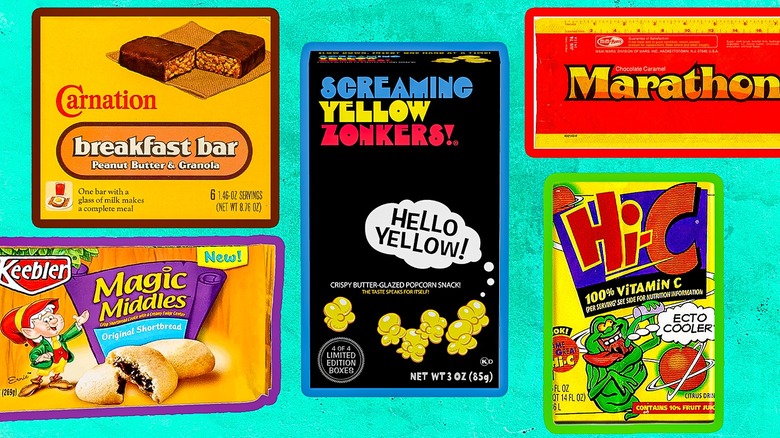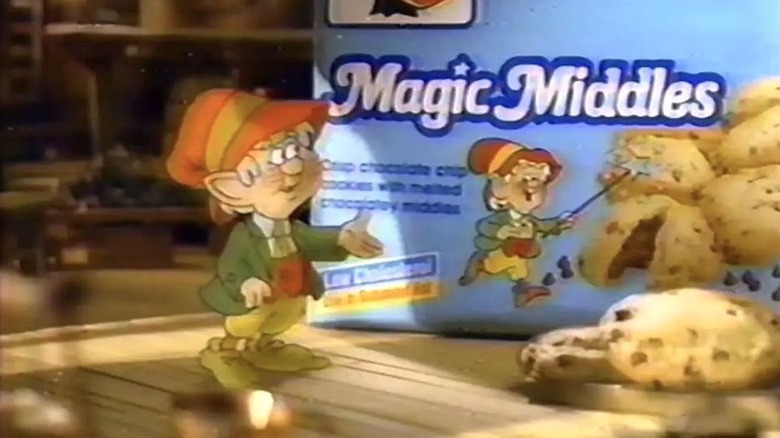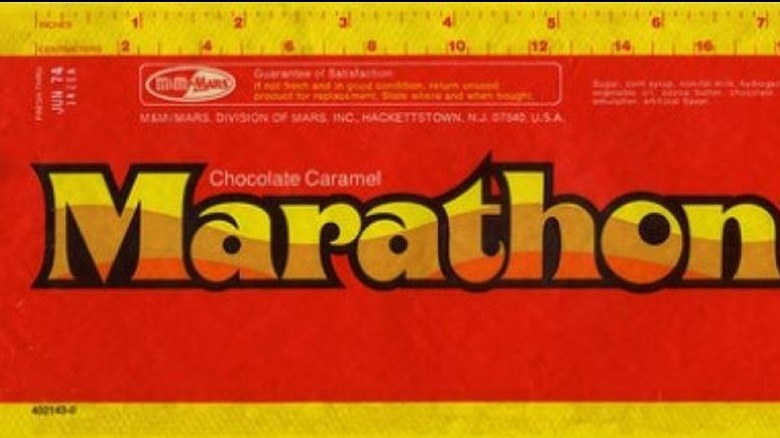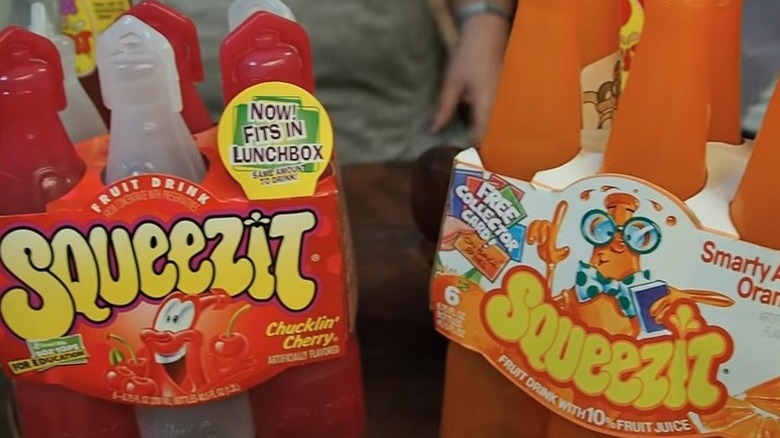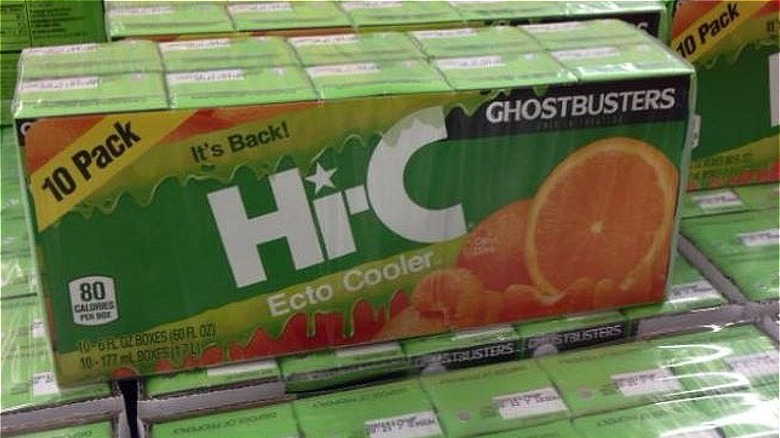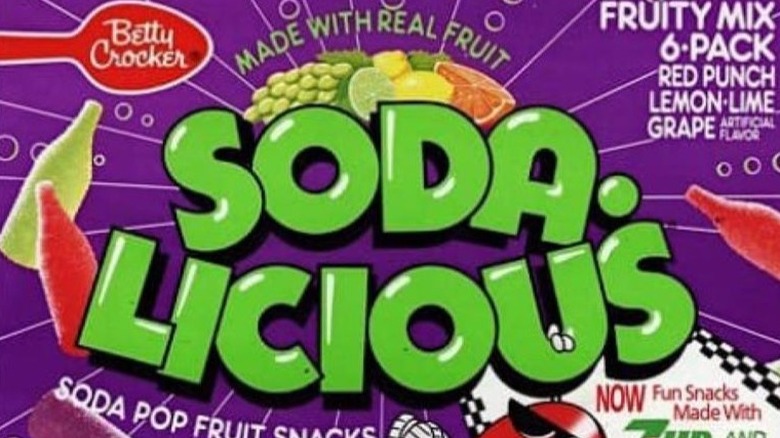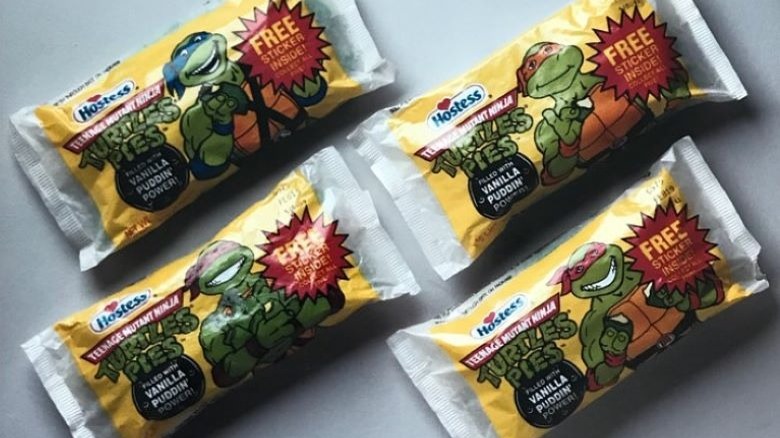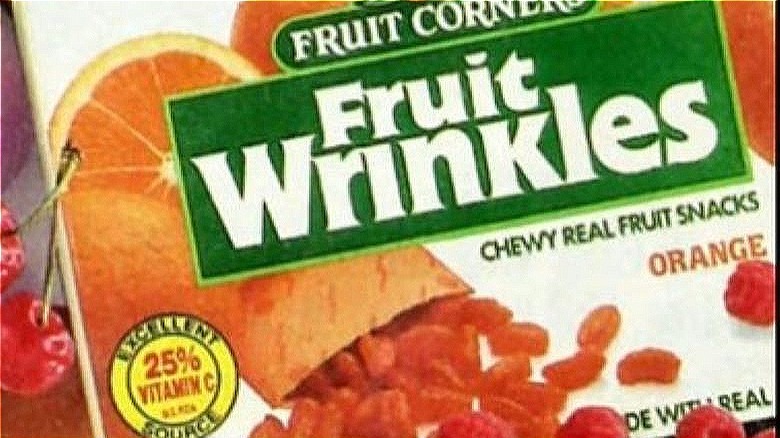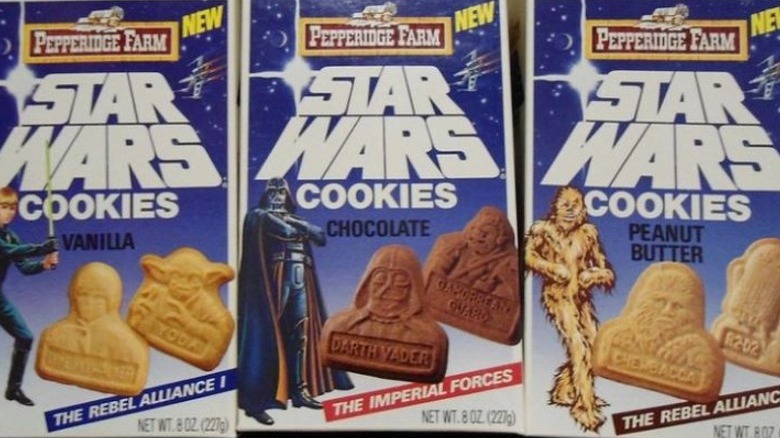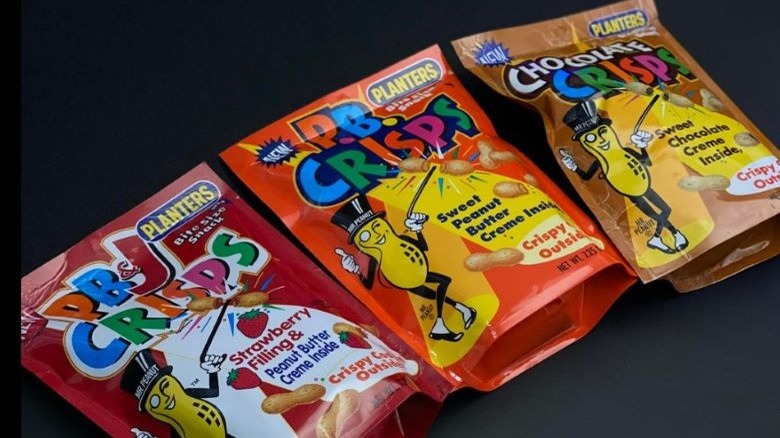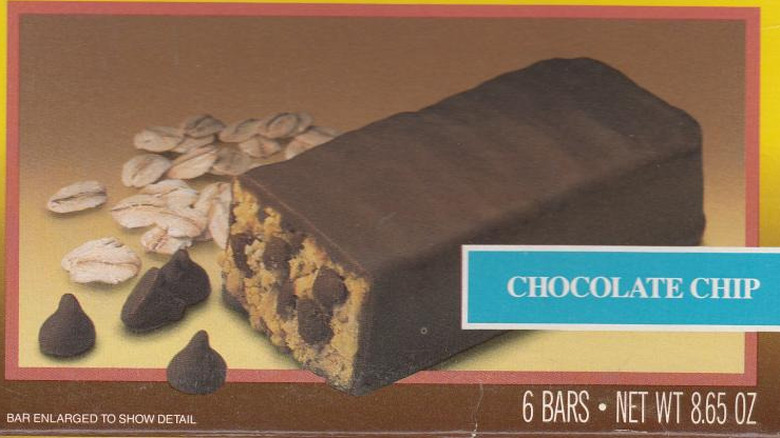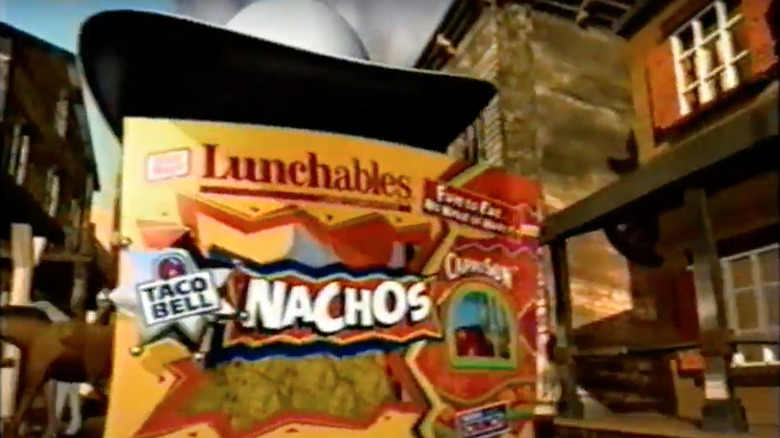15 Lunch Box Foods That Were Sadly Discontinued
The very first lunch boxes taken to school and work were metal pails, and the food inside certainly wasn't in pre-packaged single-serving portions. Over the years, companies competed to develop convenient, fun foods designed to fill them. Time-tested ones like Lunchables are still around, but others were discontinued for various reasons.
Looking at this list, it's easy to see that healthy eating was not always a priority for the manufacturers or consumers. It was more about making lunch enjoyable, and kids were likely glad to eat these treats first and take a few nibbles out of their sandwiches and fruit. Many of these lunch box foods enjoyed temporary popularity and the names still stick in people's memories. Others are harder to remember, but it's not unusual for fans to call for their faves to be brought back. The beloved Dunkaroos were a huge hit in the 1990s and now, the vanilla cookie and chocolate frosting duo has returned. In 2021, Nabisco brought back Oreo Cakesters after a 14-year hiatus.
The 15 lunch box foods below haven't reappeared yet, but unlike Dunkaroos and Oreo Cakesters, some didn't taste as good. Still ... who knows? Maybe some of these will re-enter the marketplace too.
Screaming Yellow Zonkers
As one of the earliest lunch box foods ever introduced, Screaming Yellow Zonkers had an extraordinary name that captured consumer attention — even if they didn't know what it was at first. It was introduced in 1968 by Lincoln Snacks, the same company that made Fiddle Faddle. But even though the name seemed to indicate that this treat was super-sour or super-sweet, it was like light kettle corn. The word "screaming" could be associated with the bright yellow shade, though. The popped kernels were combined with corn syrup, sugar, nonfat milk, partially hydrogenated oil, and artificial flavor and color.
Screaming Yellow Zonkers were packaged in black boxes with bright yellow, blue, and red lettering and pictures. The tasty popcorn was sealed inside closed bags that could be put in lunch boxes. The ingenious packaging also featured stories and cartoons that kids liked to read and save. The manufacturer would create new boxes with updated cartoons and stories, which turned them into collectibles.
Magic Middles
Well before the first "Magic Mike" movie was released, Keebler started selling its tasty Magic Middles. These cookies were brought out in 2001 and had a 10-year run before calling it quits. They were made from shortbread, and filled with peanut butter or fudge. And when you bit into them, that creamy center just melted into your mouth. It was sold in full-sized bags, but the individual cookies could be put into sealed plastic bags or Tupperware for easy transport.
Keebler may have stopped manufacturing Magic Middles to use its equipment for other cookies, or because of poor sales, and there's no shortage of choices that use the same kind of fudge. Its E.L. Fudge Double Stuffed Cookies have thick fudge in the middle, others are dipped in fudge, and there are ones made with chocolate chips. But none have the dreamy, creamy center that Magic Middles did.
Marathon Bars
Kids who went to school in the 1970s were always happy to pull a Marathon bar out of their lunch boxes. This chocolate candy treat was the brainchild of the Mars company, first appearing in stores back in 1973. But instead of a solid, long shape, it was braided and longer than the standard candy bar. It came in a striking red and brown package with bold blue letters; the unusual presentation made it stand out from other candy bars on the shelves. It might have been harder to fit in a lunch box, but it was bendable enough to squeeze in.
Marathon Bars looked like attached miniature chocolate pretzel ropes and were satisfyingly chewy. They contained sugar, peanuts, cocoa, cocoa butter, milk fat, and natural vanilla extract and seemed surprisingly light, but that made sense since they weren't dense. Now, Cadbury makes a Curly Wurly bar in the U.K. — it's also stretchy and can be ordered online.
Squeezit
Back in the old days, kids needed a Thermos to bring drinks in their lunchboxes or were able to purchase milk at school. But in 1985, General Mills came up with Squeezit, an artificially-flavored fruit drink conceived with kids in mind. It contained 6.75 fluid ounces in an unbreakable, squeezable plastic bottle. The first four flavors were grape, orange, cherry, and red punch.
One of the best things about Squeezit was that it could be frozen beforehand and would still be cold by the time lunch rolled around. The bottle design was changed in 1992 to resemble cartoon characters like Grumpy Grape and Smarty Arty Orange. There were other varieties too, like Tropical Punch Lemonade and Life Savers flavors. General Mills also tried a 100% fruit juice from concentrate version and a color-changing iteration. Squeezit was very successful and was out there for over 15 years, but was discontinued in 2001.
Hi-C Ecto Cooler
The first "Ghostbusters" movie debuted in 1984. One of the most memorable characters was Slimer, who was made out of green ectoplasm. He was a combination of ugly, scary, funny, and cute, and everyone was drawn to him. He was the first ghost to be caught by the Ghostbusters team and was known for leaving trailing slime in his wake.
The cartoon show "The Real Ghostbusters" came out soon after with an animated Slimer and the Hi-C Ecto Cooler was born in 1989. Hi-C already had a Citrus Cooler Drink, so the new branding made it much more appealing for the younger set. It was packaged in an 8.45-ounce box with a picture of Slimer right on the front. Kids sipped the tangerine-flavored, bright green liquid out of slim straws poked into the top. Interestingly, the Ecto Cooler lasted longer than "The Real Ghostbusters," which was canceled in 1992. The drink stayed on shelves until 2001 and was brought back in 2016 for the "Ghostbusters" reboot. But sadly, it can no longer be found.
Giggles Cookies
Smiley faces can always brighten someone's day, and that's what United Biscuits had in mind when it started making Happy Faces biscuits. The cookies' first face design was based on The Beano's Roger the Dodger character and over time, another was created to resemble a little girl. There were three kinds of Giggles Cookies in one package: a face with a baseball cap, one with a bow, and one with a hand over the mouth. These weren't sold in serving-size packages and faded away in the 1990s.
United Biscuits was later absorbed by Nabisco, which doesn't have any cookies in its current lineup that look like Giggles. The E.L. Fudge is the closest comparison we can think of. Fortunately, Nabisco hasn't stopped making Oreos, Nutter Butter, and Chips Ahoy. But wouldn't it be cool if Nabisco rebranded Giggles Cookies as emojis? Those cookies were already smiling long before texting was invented.
Soda-Licious
Nope, this long-gone lunch box food wasn't a drink, but it had a few qualities in common with actual soda. This General Mills/Betty Crocker creation graced store shelves for the first time in 1991, and kids demanded to have it in their lunch boxes because it was so cool. This fruit snack was shaped like miniature soda bottles or root beer mugs and came in red punch, root beer, lemon-lime, cherry cola, grape, and orange flavors.
It was a gummy candy at heart, but the best part was the sugar coating on the outside that fizzled on the tongue. The boxes claimed that the treats contained real fruit, though it's hard to know how much was in there. Specially-marked Soda-Licious packages also came with scratch and sniff sticks that also helped to drive sales. In 1992, the brand partnered with 7-Up and brought out more flavors. And in case you didn't notice the name was pretty clever: so delicious; Soda-Licious. Get it?
Peanut Butter Boppers
Peanut butter was always a lunchtime staple and nothing makes it taste better than sugar — this is why PB&J sandwiches will never go out of style. It's also a widely-used candy ingredient (hello, Reese's), and General Mills featured it in its 1980s Peanut Butter Boppers. The design was simple and effective, with small logs of peanut butter dipped in chocolate and other sweet coverings, then rolled in chocolate chips, crisped rice, and other crunchy coatings. The retro-style packages called to mind a 1950s theater marquee, and each contained six separately wrapped Boppers.
Peanut Butter Boppers came in decadent flavors like honey crisp, fudge chip, and cookie crunch; imagine biting through the crunchy coating and sinking your teeth into the creamy center. General Mills claimed that this treat scooped up 9% of the snack market after 90 days of its launch, and that's pretty impressive. As for why it was taken away, we don't see a clear answer. The company's Nature Valley bars filled the void somewhat, but the amount of creamy peanut butter in those just doesn't compare to Boppers.
Teenage Mutant Ninja Turtles Pies
The Slimer character from "Ghostbusters" has two things in common with the Teenage Mutant Ninja Turtles: a bright green color and the ability to sell lunch box foods. But this snack didn't have the same success as the Hi-C Ecto Cooler because it debuted in 1991 and was pulled that same year. The pies were manufactured by Hostess, with a picture of Raphael on the box. The hand-sized snacks weren't a bright, offensive color, but had dark and light green glaze on the outside. The insides had sweet vanilla pudding.
Those pies weren't the only kind of "Ninja Turtles" snack food, though. There were popsicles, fruit snacks, cereal, gelatin, and frozen pizza. The "Teenage Mutant Ninja Turtles" franchise was one of the most successful in history, but it isn't a big part of pop culture anymore. It's next to impossible to find these foods. The pies only had a short run, and even though Hostess made them, we're guessing that they didn't taste that great.
Fruit Wrinkles
Parents have been trying to get kids to eat more fruit since the dawn of time, and in the 1980s, lunch box alternatives were introduced. One was Betty Crocker's Fruit Corners' Fruit Wrinkles, launched in 1985. It was the sibling of Fruit Roll-Ups but was made differently. And one flavor's package read "strawberry fruit forms," which might have met the legal requirements, but looked kind of creepy.
Fruit Wrinkles looked like jelly beans and were eaten like raisins. That was a problem since kids could already have those at lunch. This snack wasn't anything new, like the flattened roll-ups, so they weren't as fun to eat. Still, the commercials claimed that it was a good source of vitamin C and was made with real fruit. The flavors included strawberry, orange, lemon, and cherry, but since Fruit Wrinkles were basically a boring step up from raisins, they were soon discontinued. Fruit Roll-ups and Gushers have stood the test of time because they have that novelty aspect that everyone goes for.
Star Wars Cookies
Everyone's face still lights up when they find Pepperidge Farm cookies in their lunch boxes, and the company entered the movie-related food merchandising arena several decades ago. It happened in 1983, the same year that "Return of the Jedi" was released. Pepperidge Farm made three flavors of these cookies: chocolate, vanilla, and peanut butter. There were pictures of Darth Vader, Luke Skywalker, and C-3PO on the boxes, and the cookies were shaped like them and other "Star Wars" characters.
These cookies may have been designed for a short run because they look like basic shortbread without any creamy or crunchy ingredients added. There didn't seem to be a lot of effort put into them. But consumers who love all things "Star Wars" were naturally drawn to them, and today's fans can find the boxes for sale on eBay. We can't promise that they're unopened, but if the cookies are still inside, eating them probably isn't a good idea.
Willy Wonka Peanut Butter Oompas
Roald Dahl's 1964 classic novel "Charlie and the Chocolate Factory" was the inspiration for the 1971 movie starring Gene Wilder. The film had candies with names like Rainbow Drops and Invisible Fudge, but there weren't any Oompa candies in the story. Instead, Oompa Loompas were the characters who worked in the factory and helped sing the movie's memorable songs.
The Willy Wonka Candy Company was formed before that movie was released and was run by Breaker Confection, which was part of the Quaker Oats Company. The timing couldn't have been better, and one of its first releases was Peanut Butter Oompas; chocolate Wonka Bars were never introduced because the company couldn't come up with a workable recipe. Breaker Confection was bought by Sunmark Corporation in 1975 and eventually by Nestle in 1988. Oompas were made from 1971 to 1983 and tasted like Reese's Pieces. But in 2001, the company started making fruit-flavored Oompas. The Willy Wonka Candy Company had more success with its other offerings, like Nerds, but those are now made by other companies.
P.B. Crisps
Manufactured by Planters, this 1990s lunch box staple was a huge hit but was discontinued after only three years. These bite-sized snacks looked like unshelled peanuts, but the outer part was made from graham crackers or cornmeal, wheat flour, and sugar. The crisp outside gave way to a creamy peanut butter filling that was blended with more sugar and flavorings.
This wasn't a healthy snack (even though it was designed to look that way) thanks to the extra sugar. But the colorful logo and bright red packages were eye-catching, and who wouldn't trust a peanut butter snack made by a respected brand like Planters? P.B. Crisps were discontinued in 1995, but the reasons for this aren't clear. Theories include the manufacturing process being too costly and revenues not being high enough. In any case, P.B. Crisps still has a loyal fan base and people want it brought back.
Carnation Breakfast Bars
Carnation Instant Breakfast Powder dates back to 1965 and was added to milk for a quick meal — it's still around, but was rebranded as Carnation Breakfast Essentials. Its solid-form lunch box relative, Carnation Breakfast Bars, lasted from 1975 to 2020. Forty-five years in the competitive lunch box foods market is nothing to frown upon, and those bars were very popular in their heyday. Once they went away, protein bars filled in the void and still get put in lunch boxes, backpacks, purses, and gym bags.
But when Nestle introduced Carnation Breakfast Bars, it claimed that they had the same amount of nutrition as a full breakfast of bacon, eggs, and milk. So it's no wonder that kids and adults would have them in their lunch boxes, especially when they skipped breakfast. But the bars didn't taste savory — the flavors included chocolate and granola with peanut butter, with each individually-wrapped bar weighing a mere 1.46 ounces.
Taco Bell Lunchables
Last and not least is lunch box food from a favorite fast food joint: Taco Bell Lunchables. Oscar Meyer created the original Lunchables in 1988 to boost bologna sales and might not have realized how mainstream the new products would become. The perfect marriage of fun eating and convenience resonated with parents and children from the start, and these lunch box faves now come in turkey and cheddar, ham & swiss, pizza style, and a light bologna version. But for a short while, fast food fans had their day in the sun with the Taco Bell Lunchables.
These came out in the late 1990s and were promoted as make-your-own nachos and tacos, and had an included Capri Sun drink. Oscar Mayer now sells Lunchables Uploaded, with a Nacho Walking Taco variety that comes with ground beef in sauce, chips, salsa, and nacho cheese sauce. But unlike its predecessor, this has to be heated in the microwave for 15 seconds. We're guessing that the Taco Bell one didn't do well because it had to be eaten at room temperature.
